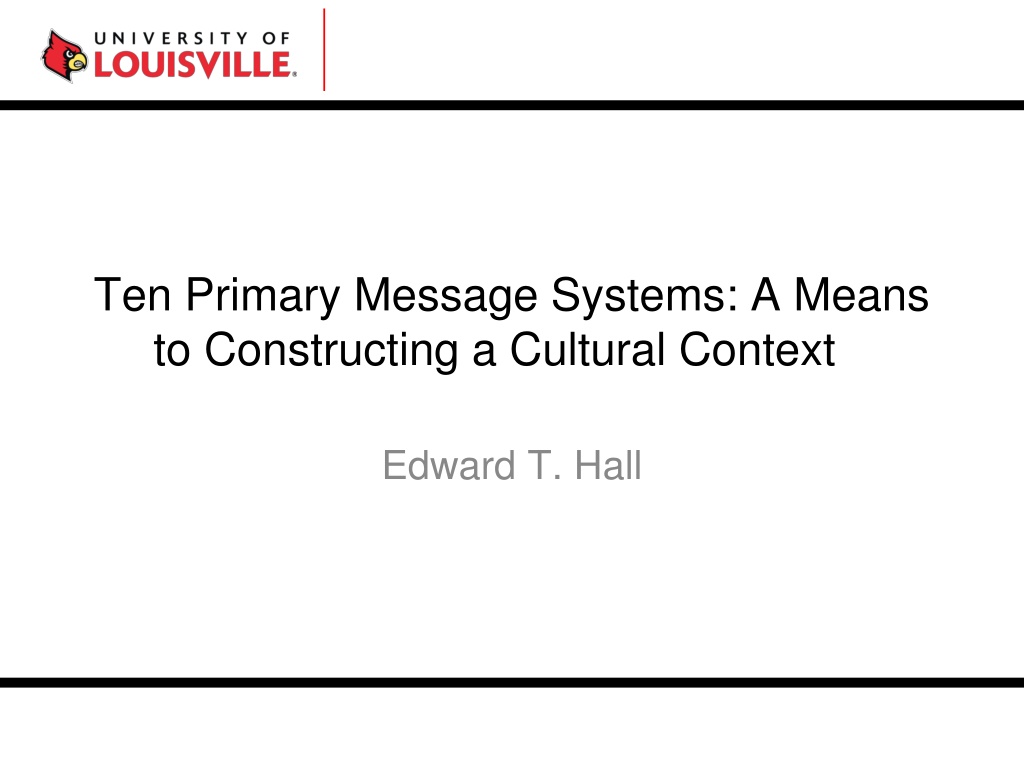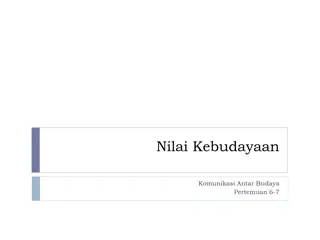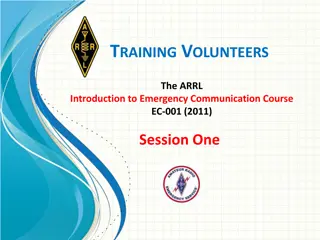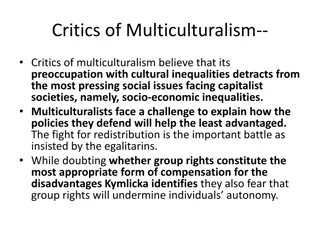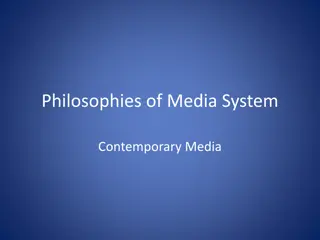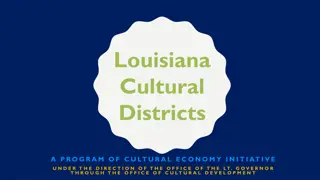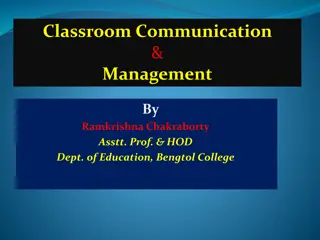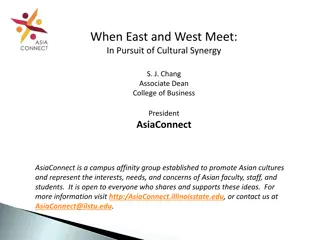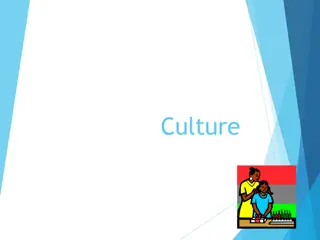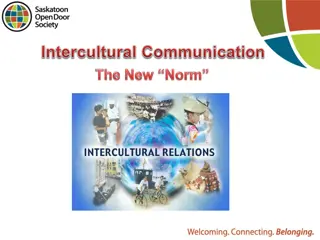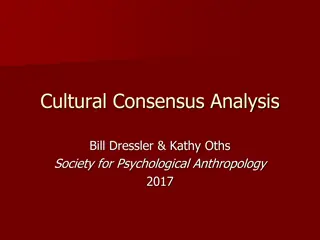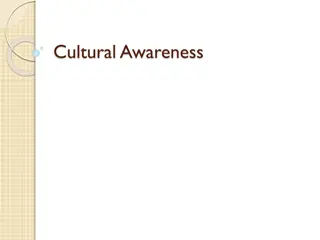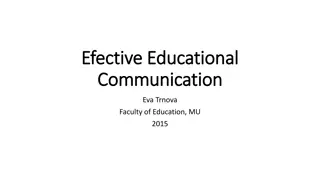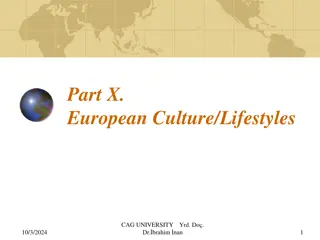Understanding Cultural Context and Communication Systems
Explore the significance of cultural context in communication through various message systems like primary message systems, intercultural communication models, dimensions of cultural variability, and more. Delve into topics such as interaction, subsistence, bisexuality, temporality, and territoriality to grasp the intricate web of cultural norms and values shaping human interactions.
- Cultural Context
- Communication Systems
- Intercultural Communication
- Dimensions of Variability
- Cultural Values
Download Presentation

Please find below an Image/Link to download the presentation.
The content on the website is provided AS IS for your information and personal use only. It may not be sold, licensed, or shared on other websites without obtaining consent from the author. Download presentation by click this link. If you encounter any issues during the download, it is possible that the publisher has removed the file from their server.
E N D
Presentation Transcript
Ten Primary Message Systems: A Means to Constructing a Cultural Context Edward T. Hall
Cultural Context The cultural context represents an accumulated pattern of values, beliefs, and behaviors shared by an identifiable group of people with a common history and verbal and nonverbal symbol systems Communication 440/690 Panama 2015
A Contextual Model of Intercultural Communication
Primary Message Systems Communication 440/690 Panama 2014
Dimensions of Cultural Variability Individualism Collectivism High-Low Context Value Orientations Power Distance Uncertainty Avoidance Communication 440/690 Panama 2014
Interaction The most basic of human activities Talking Living in groups Lies at the hub of culture
Association Complex organisms are really a society of cells, each with a function Begins when two cells have joined The issue is one of organization Pecking order
Subsistence Nutritional requirements How does one eat and go about getting food This Primary Message System includes everything from food to a country s economy Work is a key dimension of subsistence Work and stigma?
Bisexuality (Not contemporary elided usage of the term) Sexual reproduction and sexual differentiation, the combinations of genes. Sexual differentiation is not about physiology Gender is socially or culturally constructed
Temporality Life is full of rhythms and cycles Tempos of speech Time to eat Time often an obvious cultural message system
Territoriality Taking possession, use, and balance of life and usage of space History of mankind is often described as one group trying to get space from another Status and space
Learning Behavior modification, adaptive mechanisms, and the various patterns of learning as agents of culture. Tied to when animals became warm-blooded Had to adapt to environment Learning by doing or watching or being told
Play Joking relationships, intimately interwoven with learning, competition primarily as displayed in the west versus vast continuum among various cultures with wider spectrum of vast degrees of enjoyment. Competition as play
Defense Through warfare, religion, medicine and law enforcement, internal or external dependencies, cross-culturally various degrees of contemporary compartmentalization.
Exploitation of Resources Elaboration or materials, in dress, tools, toys, books, signs of status, etc. Furniture takes the place of squatting Telephone carries a voice over long distances Clothes
I A F G T S L P D U Interaction AI FI GI TI SI LI PI DI UI Association IA FA GA TA SA LA PA DA UA Food IF AF GF TF SF LF PF DF UF Gender IG AG FG TG SG LG PG DG UG Time IT AT FT GT ST LT PT DT UT Space IS AS FS GS TS LS PS DS US Learning IL AL FL GL TL SL PL DL UL Play IP AP FP GP TP SP LP DP UP Defense ID AD FD GD TD SD LD PD UD Use of Resources IU AU FU GU TU SU LU PU DU Communication 440/690 Panama 2014
